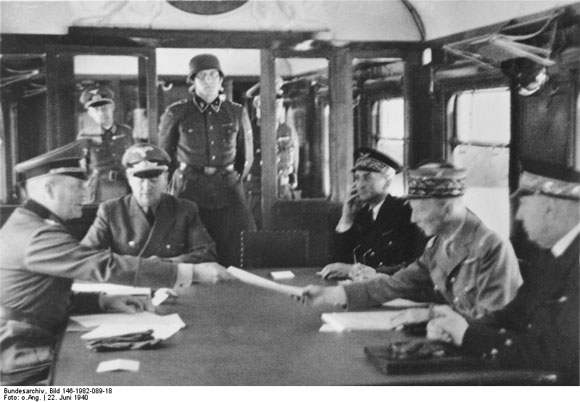Source

Source: © Bundesarchiv
After the German army had won “Blitzkrieg” victories over the Netherlands, Belgium, and Luxembourg, forcing those countries to capitulate, the battle for France began on June 5, 1940. By June 17, France was already in a hopeless military position, and Marshal Philippe Pétain (who had been named head of state after the resignation of Minister President Paul Reynaud) began peace negotiations. Five days later, on June 22, 1940, the armistice was signed in the Compiègne forest. The site had been chosen by Hitler – it was here that Germany had signed the armistice ending World War I in November 1918. This photograph shows General Wilhelm Keitel handing the German conditions for the armistice to General Charles Huntziger of France. The armistice, factually a dictate, stipulated that 3/5 of France, including all of the major industrial areas in the north, would be occupied by Germany; the unoccupied territory in the south would be ruled by the collaborating Vichy regime.

Source: © Bundesarchiv